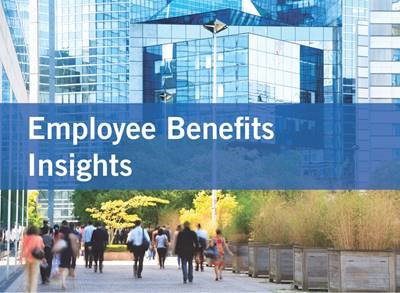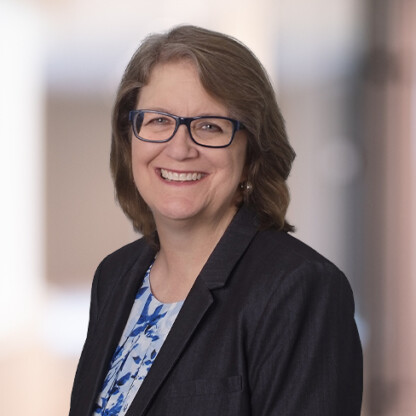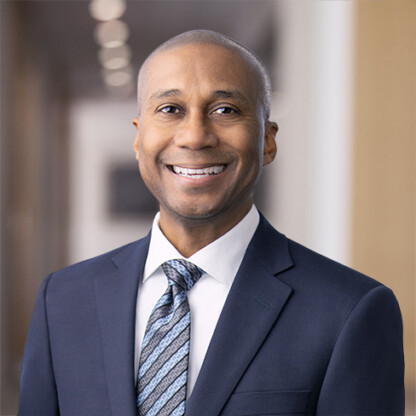Diving Into SECURE 2.0: New Changes Ease Plan Sponsor Administrative Burdens

The SECURE 2.0 Act of 2022 (SECURE 2.0) significantly changes the legal and administrative compliance landscape for U.S. retirement plans. Foley & Lardner LLP is authoring a series of articles that take a “deep dive” into key SECURE 2.0 provisions that will affect how employers structure and administer their 401(k) plans, pension plans, and other types of employer-sponsored retirement plans.
Last month, we discussed SECURE 2.0’s new required minimum distribution (RMD) rules. In this article, we examine certain SECURE 2.0 changes designed to simplify plan administration for sponsors of defined contribution plans (including Code Section 401(k), 403(b) plans, and 457(b) plans)1 and encourage employees to save for their retirements.
* * *
In a 1986 press conference, President Ronald Reagan infamously quipped: “the nine most terrifying words in the English language are: ‘I’m from the government, and I’m here to help.’” While legislation affecting retirement plans can sometimes be frustratingly complex (can you say “ERISA”?), SECURE 2.0 contains a number of provisions designed to lessen the administrative burdens faced by 401(k) plan sponsors (employers).
Optional Changes/Effective Date
Each of the administrative changes discussed below is optional – employers aren’t obligated to adopt any of them.
If an employer elects to do so, however, the changes are generally effective for plan years beginning after SECURE 2.0’s enactment. So, an employer with a calendar year plan (i.e., a plan using a January 1 to December 31 plan year) may incorporate the changes into its 401(k) plan in 2023 (depending on the employer’s own objectives and the ability of its recordkeeper to accommodate any requested changes).
Loosening Hardship Withdrawal Documentation Requirements
Many 401(k) plans permit participants to request hardship withdrawals from their plan accounts to help alleviate the impact of any “immediate and heavy” financial need the participant may be facing. Certain life events (such as funeral expenses, college tuition, expenses to repair a participant’s residence, etc.) automatically constitute an “immediate and heavy” financial need. In the past, 401(k) plan participants requesting hardship withdrawals had to prove both that: (i) the event leading to the financial hardship had occurred, and (ii) the participant lacked the cash or other resources to meet it.
Following a 2019 change in the IRS’s rules, however, employers were permitted to rely on a participant’s certification that he or she had insufficient cash or liquid assets to reasonably meet his or her financial need. To receive a hardship withdrawal, though, the participant still had to prove the hardship event itself occurred.
Now, under the new SECURE 2.0 changes, participants can self-certify both that: (i) the hardship event occurred, and (ii) they lack the financial resources to alleviate it. Unless the employer knows the participant’s certifications are untrue, it may rely on the certifications when determining whether to grant a hardship withdrawal. Employers should nevertheless caution participants to retain underlying documentation of both the hardship event and their financial circumstances, in case the IRS requires the employer to produce such documentation under audit.
This change should streamline the hardship withdrawal process considerably. Employers will no longer need to determine whether a participant has experienced a true hardship or if the participant lacks the funds to address it, and participants will get the funds they need quicker.
Eliminating Unnecessary Plan Notices to Unenrolled Participants
Employers know that printing and distributing required participant notices (describing investment options, fees, and participants’ rights under their 401(k) plan) isn’t cheap. Even if employers provide such notices electronically, they must still take time and effort to ensure the notification process meets IRS and DOL standards.
Another SECURE 2.0 change attempts to ease this burden. Under that change, an employer won’t violate ERISA if it fails to provide required notices to individuals eligible for, but not enrolled in, the employer’s plan. However, this exemption will only apply if those individuals (called “unenrolled participants” by SECURE 2.0) received a summary plan description and other eligibility notices when first eligible to participate in the 401(k) plan.
Consistent with Congress’ aim of improving retirement readiness in the U.S. workforce,2 employers can’t just ignore unenrolled participants. SECURE 2.0 requires employers to provide unenrolled participants with annual notices reminding them of their eligibility to participate in the plan. The notice must also describe any employer contributions, vesting schedules, and election deadlines. The employer must also provide unenrolled participants with any otherwise-required documents upon request.
SECURE 2.0 doesn’t specify which notices are covered by this change, and we anticipate further guidance from the agencies addressing that issue, and describing the content of the annual reminder notice. Nevertheless, this change will allow employers to save time, money, and internal resources previously spent on the printing and distribution of unnecessary plan notices.
Offering De Minimis Financial Incentives for Participation
Before the enactment of SECURE 2.0, the only incentive employers could use to encourage 401(k) plan enrollment among employees was the promise of matching contributions. However, consistent with its goal of improving retirement readiness, SECURE 2.0 permits employers to offer “de minimis” financial incentives to encourage plan enrollment. Such incentives may not be paid from plan assets.
While SECURE 2.0 does not define de minimis, the Senate summary of SECURE 2.0 mentions, without further explanation, “low-dollar” gift cards. Regardless of the amount, employers must treat the value of gift cards as taxable income to the employees receiving them. The incentive would also be subject to income and employment taxes. It’s possible certain tangible incentives (such as small gifts of food, books, or flowers) would be excluded from compensation if, considering their value and frequency, it would be unreasonable or impractical for the employer to account for them.3 Guidance from the IRS on this issue would be welcomed.
Treating Employer Contributions as Roth Contributions
Before SECURE 2.0, employers could only make employer matching contributions to their 401(k) plans on a pre-tax basis – Roth matching contributions weren’t permitted. If participants wanted to convert pre-tax employer matching contributions into Roth contributions, they had to complete an in-plan Roth conversion (if permitted by the plan), and pay tax on the amount converted and any accumulated earnings.
Now, under SECURE 2.0, employers may offer 401(k) plan participants the option of receiving employer matching contributions or profit-sharing/nonelective contributions on a Roth basis. Such contributions must, however, be nonforfeitable to the participant (i.e., 100% vested).
Most recordkeepers should be able to accommodate this election. Even before SECURE 2.0’s enactment, many recordkeepers assisted participants in completing in-plan Roth conversions.
Before offering this new SECURE 2.0 option to participants, employers should consider whether, in their circumstances, it makes sense to eliminate vesting requirements imposed on matching or profit-sharing/nonelective contributions.
Facilitating Automatic “Roll-Ins” and Portability
Under current law, employers may automatically cash out the 401(k) plan accounts of terminated participants whose balances don’t exceed $1,000. If a terminated participant’s account balance equals or exceeds $1,000, but is less than $5,000 (increasing to $7,000 in 2024 – another SECURE 2.0 change), the employer may roll the former participant’s account balance over to an individual retirement account (IRA) established on the participant’s behalf.
After being transferred to an IRA, a former participant’s funds will generally be invested in a default investment option intended to protect the former participant’s principal. Despite that intent, the former participant’s funds may be lost or eroded by the IRA provider’s fees.
SECURE 2.0 addresses this issue by permitting employers and their recordkeepers to transfer the IRA balances of former 401(k) plan participants into retirement plans maintained by the individuals’ new employers (unless a former participant elects otherwise). This change will help participants consolidate their retirement savings in a single employer-sponsored retirement plan, lessening the likelihood those funds will be forgotten or lost due to inaction.
What Should Employers Do Now?
As noted above, the SECURE 2.0 changes described in this article are optional – employers aren’t obligated to adopt them. However, employers considering adopting one or more of the SECURE 2.0 changes should work with their recordkeepers to ensure the requested changes can be incorporated into their plans’ administrative processes. Employers may also need to adopt plan amendments to properly document the incorporation of certain SECURE 2.0 changes into their 401(k) plans (for example, updating the plan’s hardship withdrawal determination process or to allowing the employer to make Roth matching contributions). Such plan amendments must be adopted by the end of the plan year in which the change is effective.
These SECURE 2.0 changes should be popular with employers looking to lessen the administrative burden (and cost) of maintaining their 401(k) plans. We anticipate that, over time, the IRS and the DOL will issue guidance clarifying the scope of many of these SECURE 2.0 changes. Employers eager to implement the time- and money-saving SECURE 2.0 changes described herein for the 2023 plan year should take a good faith approach to doing so.
1 For convenience, in this article, we’ll refer to all such plans, collectively, as “401(k) plans.”
2 According to a 2022 survey, 55% of Americans say their retirement savings are not where they need them to be. Around 35% said they were “significantly behind” in saving for retirement.
3 This is the approach taken by the IRS in connection with respect to other de minimis fringe benefits.
 |
As part of Foley’s ongoing commitment to provide legal insight to our clients and colleagues, our Employee Benefits and Executive Compensation Group has a monthly newsletter we call “Employee Benefits Insights,” where we provide you with updates on the most recent and pressing matters concerning employee benefits and other related topics. Click here or click the button to the left to subscribe. |

